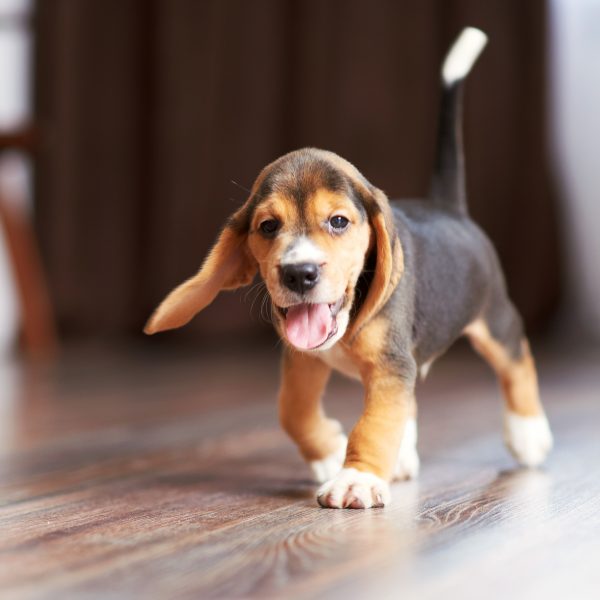How to Puppy-Proof Your Home
 Being a puppy is all about exploring the environment and getting into loads of trouble. Using all of their senses to explore, they get into everything. Needless to say, this can create a dangerous situation when chomping down on the wrong houseplant or touching something sharp. So, it’s up to the puppy’s human parents to make their home safe for a clueless canine. Here are a few ideas on how to puppy-proof your home:
Being a puppy is all about exploring the environment and getting into loads of trouble. Using all of their senses to explore, they get into everything. Needless to say, this can create a dangerous situation when chomping down on the wrong houseplant or touching something sharp. So, it’s up to the puppy’s human parents to make their home safe for a clueless canine. Here are a few ideas on how to puppy-proof your home:
1. Remove or Store Toxic Plants and Foods
If you leave a delicate glass dish full of candy on the living-room coffee table, you should relocate these delicious morsels to a higher surface. You should also know that dogs can chew through plastic, so leaving medication where your new pup can reach it is a bad idea.
If you have any houseplants, they could become a target for the puppy’s curious munching. Try to look up each houseplant you own and make sure they are safe for dogs. No matter how careful we are, puppies are rambunctious explorers that can find hidden, dangerous items, so it’s best to remove what we can and securely store anything else.
2. Store Trash Differently
Don’t store bags of trash where your puppy might be able to rip into them. This goes for any kind of trash bag. However, the bathroom trash and kitchen trash is of special concern. Sharp razor blades and potentially toxic personal-care products are often disposed of in the bathroom.
The kitchen trash often becomes the catch-all for everything, including foods that are harmful to your pup. Trash cans with secure, locking lids and taking the trash out regularly away from where your puppy can access it are a good start.
3. Make Sure Your Doors are Secure
Any doors to the outside should be securely closed. Also, make sure that any puppy doors are secure enough that an energetic puppy can’t knock them down. It’s also a good idea to microchip your puppy as a safe backup in case they happen to get out.
4. Puppy-Proof Your Cabinets
Make sure that the doors to any low cabinets in the kitchen or bathroom are secured with childproof locks – especially if the cabinets contain sharp tools or cleaning supplies a pup may want to touch or eat.
5. Keep Cords out of Reach
Puppies love to chew on cords. Take a survey of your home to make sure all your wires are hidden and extra cords are stored securely. This is a pet fire safety tip that can help reduce the risk of electrical fires and protect your pup while puppy-proofing your home. It also helps to make sure you have plenty of designated chew toys on hand so you can easily redirect your puppy’s exploring mouth to the appropriate objects.
6. Straighten Up
Getting a new puppy is a great motivation to clean, especially if you have a habit of throwing things on the floor. Puppies’ propensities to chew on inappropriate objects means that you should remove anything left lying around. This is for the puppy’s safety as well as for your sake!
Dogs famously love to chew on shoes. If the puppy is allowed in your room, consider keeping your closet door closed or getting a hanging shoe storage unit. You should also remove hair clips and clothing from low surfaces where the puppy will be exploring.
7. Puppy-Proof Your Yard
There are probably many potential hazards to a puppy in your yard. These include lawn products like pesticides and car products like antifreeze and gasoline. Make sure you move these toxic substances out of your puppy’s way.
You should also familiarize yourself with plants that are toxic to pups and remove them from your yard. Survey your yard and clear out any debris. Evaluate any yard ornaments or furniture you have to ensure everything is in good shape and there is nothing that could harm your puppy.
If you’re getting a new puppy, congratulations! You don’t have to be nervous about puppy-proofing your home – just take these tips into account and know what to expect in the first six months. If your pup gets into something he shouldn’t, they usually bounce back. If there is any question about something your pup has ingested, however, a quick trip to the vet will answer any questions and help provide solutions.
